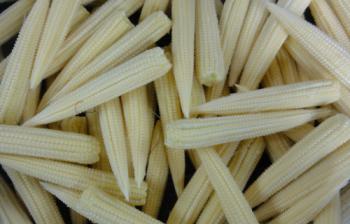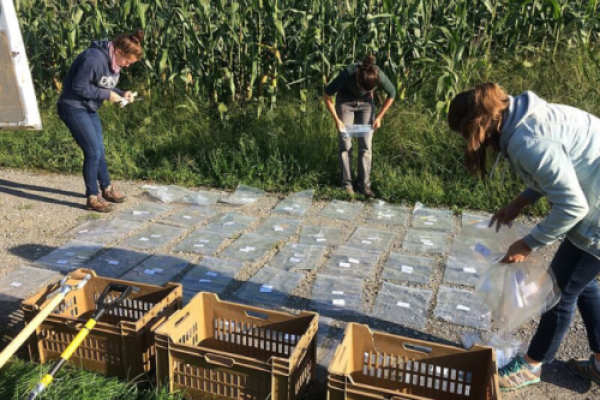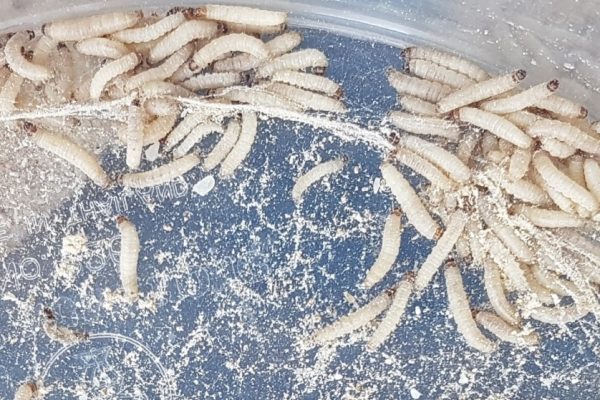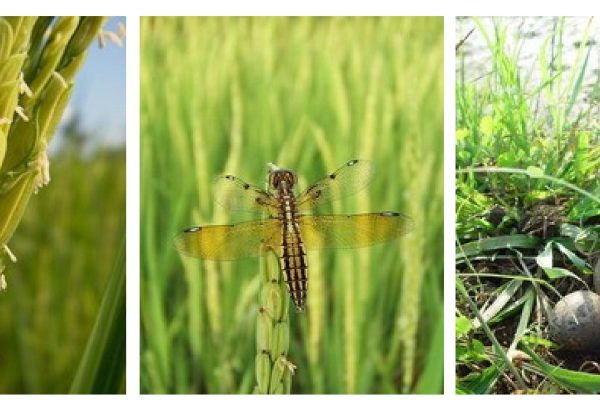
Background of the experiment
In Mae Tha Community, baby corn is a very prominent crop, next to rice and vegetables. Baby corn production usually is accompanied by fast money, as it only takes about 60 days from seeding to harvest. For organic farmers, there can be up to two cycles of baby corn per year.
During the last years, many farmers in Mae Tha gave organic production of baby corn a trial. In 2008 there were 102 farmers planting organic baby corn. This year, after continuous decline, the number of farmers has shrunk to 11. Apparently, organic production was in the short term too labor intensive, too difficult and not profitable.
According to organic farmers who are growing baby corn in Mae Tha, the second cycle of baby corn is usually less productive with comparatively small yield. Most likely this can be attributed to fertilization in organic farming because the problem is less known with conventional farmers. Other reasons may be for example the increased precipitation during the second cycle. On account of this, many farmers do not grow baby corn during the second cycle.
In organic agriculture, the production and application of organic fertilizer is essential for farmers. Fertilization also implicates the enhancement of the soil in general: the improvement of water holding capacity, aggregation capability, humus content, nutrient availability and life of organisms in the soil. Cheap and easy-to-apply solutions for soil improvement and fertilization are always interesting for farmers as long as they the yield stays unchanged or is even increased. In Mae Tha Community another factor is contributing to the importance of easy-to-apply fertilization methods: Farmers are increasingly getting older without having a successor to take over the farm. Thus, they work into old age and face severe problems when it comes to the exhausting and hard work on the field.
With this in mind, Catherine Saunier started an experiment on behalf of GreenNet, testing different fertilization techniques for baby corn in Mae Tha community. Catherine Saunier is a senior student from France with specialization in the field of agriculture in tropical regions. The goal of the experiment was to find out whether a difference in yield of baby corn could be achieved by using a liquid containing bluegreen algea as fertilizer. Further, it was checked whether the use of bluegreen algea could turn out to be more profitable than the use of common organic fertilizer.
(Above- the blue-green algae as sold in the market)
Course of action
The experiment was run from May to August 2013. Catherine Saunier was the main researcher while she was supported by Jiruthitikarn Khamgars with translation service and general knowledge on the place. Jiruthitikarn Khamgars is a farmer’s wife, living in the area. Three different plots were chosen for the experiment, altogether counting up to 1.5 rai (equates to 0.24 hectare). On each of these plots four fertilization methods were tested:
| Treatment 1: | Application of compost from cow or chicken manure |
| Treatment 2: | GreenNet fertilizer in form of dried pork manure powder |
| Treatment 3: |
Bluegreen algea liquid (Hapalosiphon species) dissolved in water together with mulch from rice straw |
| Treatment 4: | Bluegreen algea liquid dissolved in water together with mulch from rice straw and GreenNet fertilizer |
The baby corn was planted on the three plots according to the common practice in the region: The fields were plowed followed by the seeding of the corn and the application of fertilizer at the same time. After 20 days beds were made around the plants and fertilizer was applied again. After another 30 days the plants were castrated to prevent pollination of the plants. Several days later, the baby corn could be harvested.
In addition to the field experiment, Catherine Saunier interviewed 15 organic farmers and three conventional farmers to also get an insight into the social and economic aspects of organic baby corn farming in the area.
Results of the field experiment and the interviews
As it turned out, no significant difference in the yield could be found through the application of bluegreen algea as fertilizer. On two plots yield from treatment with bluegreen algea and mulch was a little higher than from other treatments. On the third plot yield from treatment with bluegreen algea and mulch was lowest. Further, the use of bluegreen algea and mulch (treatment 3) turned out to be the cheapest treatment per rai while the use of GreenNet fertilizer (treatment 2) turned out to be the most expensive one. The interviews with different farmers especially showed that many farmers are not convinced of the profitability of the use of bluegreen algae as, according to their statement, they consider the application of rice straw mulch as too exhausting and difficult. Most farmers use the rice straw to feed their cows. If they want to use it as mulch on the field they would have to buy it in addition, so overall costs would also increase.
(above Catherine Saunier helping to shuck baby corn and collect yield data)
Lessons learned
From this experiment it could be concluded that bluegreen algea can just as well be used as compost or GreenNet fertilizer. However, it is important to consider the great differences in yield on different soils. Furthermore, the long-term effect of bluegreen algae application should be taken into account. While Catherine Saunier examined only one cycle of baby corn growth, Jiruthitikarn Khamgars will continue the experiment in the second cycle. As the application of bluegreen algae in the experiment turned out to be cheaper than all other fertilization methods, its use is likely to improve profit for farmers on avarage. But obviously many farmers don’t like the idea of applying the bluegreen algea liquid together with mulch. The yield of plants that are fertilized by bluegreen liquid only has yet to be tested.
In summary: Most likely, bluegreen algae are not the glorious solution to the fertilization issue for organic farmers in Mae Tha. But many questions remain unanswered and a bunch of new questions came up. Research should continue! The more farmers of the community will invest in the testing of fertilization methods, the more likely effective, cheap and easy-to-apply solutions can be found. Maybe you should also try to apply bluegreen algae on a small plot in your garden?
By Sandra Baumgardt, August 2013



